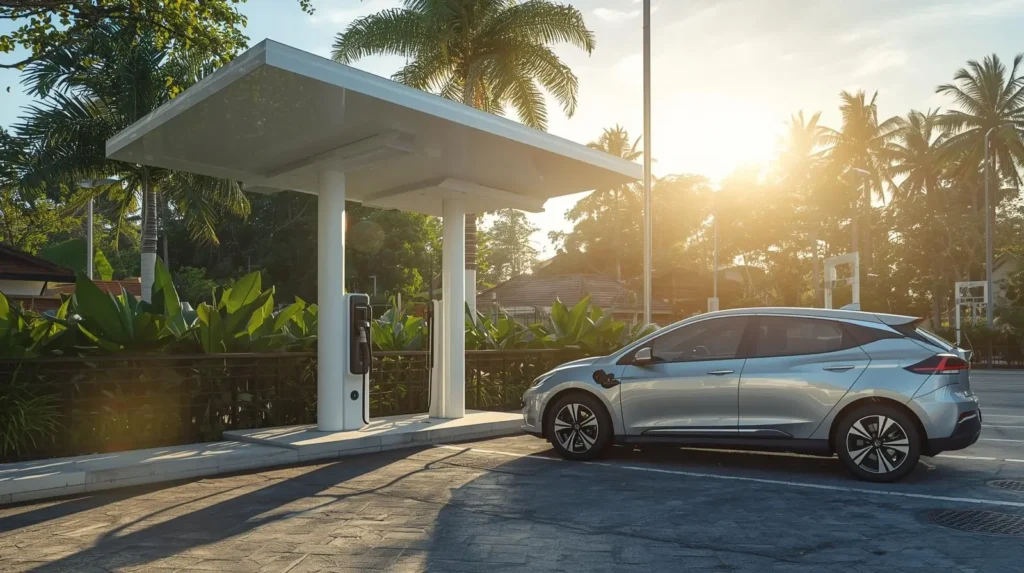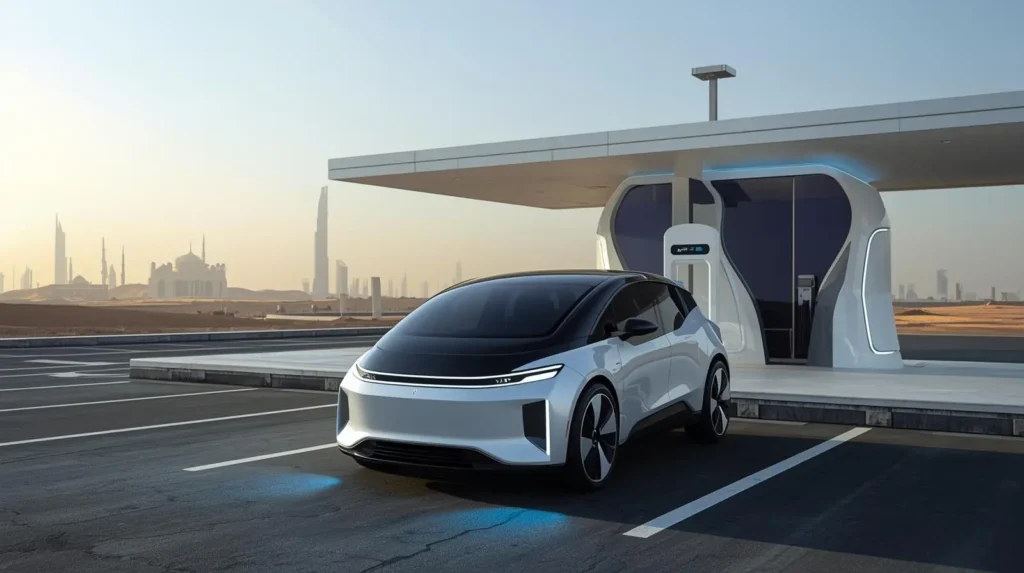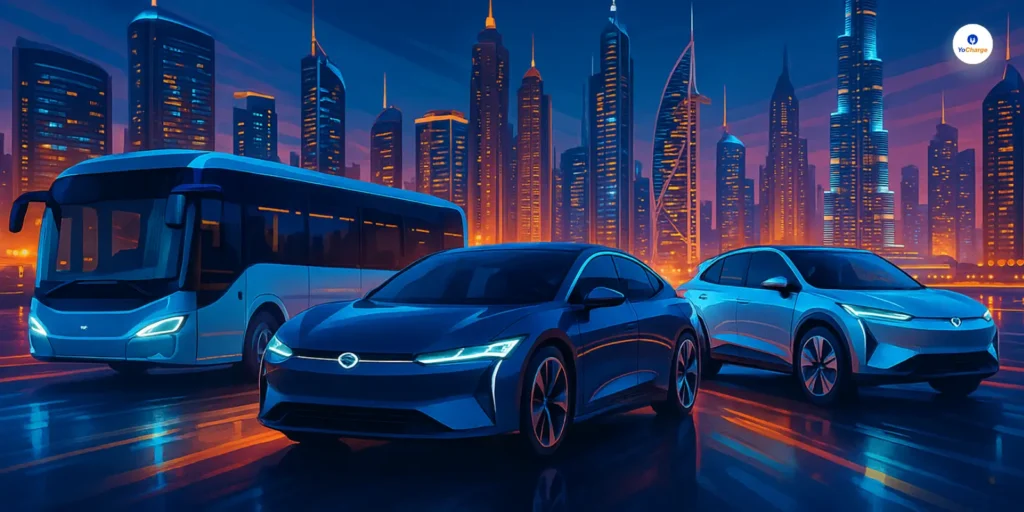
Imagine your car not just as a mode of transport but as a mini power plant that can power your home, reduce grid strain, and even earn you money. Vehicle-to-Everything (V2X) technology is revolutionizing how we think about energy and mobility.
With the rise of electric vehicles (EVs) and renewable energy, V2X is poised to reshape both the auto and energy industries by turning EVs into mobile energy hubs.
This cutting-edge technology is already transforming how we power homes, businesses, and even entire cities. But how does it work, and why is it so important? Let’s explore the profound impact of Vehicle-to-Everything technology and its potential.
What is Vehicle-to-Everything (V2X) Technology?
At its core, Vehicle-to-Everything (V2X) technology allows electric vehicles to not only draw energy from charging stations but also supply energy back to various systems. It enables vehicles to interact with infrastructure (V2I), grids (V2G), other vehicles (V2V), and even homes (V2H).
The key benefit of V2X is its ability to stabilize energy systems and reduce demand on power grids, especially during peak hours.
How Does Vehicle-to-Everything (V2X) Technology Work?
V2X relies on bidirectional charging technology that allows energy to flow both to and from the EV. This enables a range of applications, including:
- Vehicle-to-Grid (V2G): EVs can send excess energy back to the power grid, helping stabilize supply.
- Vehicle-to-Home (V2H): EVs can power homes during blackouts or provide supplementary energy to reduce utility bills.
- Vehicle-to-Vehicle (V2V): EVs can transfer energy to other vehicles in emergencies.
- Vehicle-to-Infrastructure (V2I): A wireless communication system that allows vehicles to exchange data with roadway infrastructure.
- Vehicle-to-Load (V2L): It is a feature in some electric vehicles (EVs) that allows the vehicle’s stored energy to power external device
This interaction is made possible through smart grids, bidirectional chargers, and advanced software systems that manage energy flow.
Benefits of Vehicle-to-Everything (V2X) Technology
V2X technology offers a range of advantages, from optimizing energy use to enhancing grid reliability. As electric vehicles become more prevalent, these benefits will only increase. Here are some key ways V2X can positively impact energy systems and daily life.
Balancing the Grid
V2X offers a solution to the fluctuating nature of renewable energy sources like wind and solar. When the sun is not shining or the wind is not blowing, EVs can supply energy back to the grid. It is estimated that V2G could save £3.5 billion in grid management costs.
Emergency Backup for Homes
In case of blackouts or natural disasters, V2X-enabled EVs can act as mobile energy storage units. For example, several homes remained powered by their EVs using V2H technology after Hurricane Helene.
According to the Washington Post, a fully charged EV can power an average household for up to three days.
Lower Energy Bills
With V2X, households can use their EVs to store energy when it is cheap (during off-peak hours) and use it when electricity costs more.
This can lead to significant savings. According to Indra Renewables Technologies, a household can save up to £200 a month on their electricity bills via V2H technology.
Increased Renewable Energy Usage
By providing flexible storage, V2X allows higher integration of renewable energy sources into the grid. EVs can store excess renewable energy when production exceeds demand and discharge it when needed. It enables a more stable and sustainable energy system.
Challenges and Limitations of V2X Technology
While V2X technology has great potential, it also faces significant challenges. From infrastructure hurdles to regulatory issues, several factors may slow down widespread adoption. Understanding these challenges is crucial for the development of future solutions.
Infrastructure Requirements
V2X requires bidirectional charging stations, which are not as widely available as standard chargers. Additionally, upgrading homes to work with V2X may require installing new wiring and systems.
Battery Degradation
The continuous cycling of charging and discharging in V2X applications can accelerate battery degradation. According to research from Science Direct, the use of V2G can reduce an EV’s battery life by 09–14%. However, ongoing advancements in battery technology aim to minimize these impacts.
Regulatory and Market Barriers
V2X adoption is still in its early stages, and there is a lack of consistent regulations and incentive structures across countries. Policies that support the integration of EVs into the grid are needed to fully unlock the potential of V2X technology.
Vehicle-to-Everything (V2X) and the Power Grid
The integration of V2X technology with the power grid is essential for its success. This connection allows for better energy management and the stabilization of electricity demand. Let’s explore how V2X works within power grids and the potential benefits it can bring.
How V2X Stabilizes the Grid?
V2X technology helps balance power demand by allowing energy stored in EV batteries to be sent back to the grid when demand spikes. This helps prevent blackouts and eases the strain on infrastructure during peak hours.
In regions like California, where renewable energy adoption is high, V2X could provide a critical buffer.
Smart Grids and V2X Integration
Smart grids play a key role in enabling V2X technology. These grids use sensors, automation, and advanced data analytics to manage energy flows efficiently.
When integrated with V2X, smart grids allow for real-time decisions on when to charge or discharge EV batteries. This makes energy systems more responsive and reduces waste.
V2X in Action: Real-World Examples
Vehicle-to-Everything (V2X) technology is changing how transportation works by allowing vehicles to communicate with each other, roads, and even pedestrians. Below are some real-life examples of its use:
Major Automakers Using Vehicle-to-Everything (V2X)
- Toyota: Toyota is adding V2X systems to its cars using Dedicated Short Range Communications (DSRC). This technology helps cars share data like speed and position in real-time. It improves road safety by alerting drivers to potential accidents.
- General Motors (GM): GM is using V2X to cut down on traffic jams. Their vehicles receive real-time updates on road conditions, helping drivers make safer, more informed decisions.
Startups Leading Vehicle-to-Everything (V2X)Innovations
- !important: This startup has developed a pedestrian-to-vehicle (P2V) system. It creates a virtual safety zone around people by sending their location data to nearby connected cars. This helps prevent collisions with pedestrians and cyclists.
- VComm: An Israeli startup, VComm focuses on making scooters and bikes safer through V2X technology. It allows these vehicles to communicate with roads and infrastructure, promoting safer riding.
- Spoke: Spoke’s VRU2X system uses cellular V2X technology to improve safety for vulnerable road users, like pedestrians and cyclists. This system helps prevent crashes by allowing vehicles and people to communicate directly.
The Future of Vehicle-to-Everything (V2X) Technology
The future of Vehicle-to-Everything (V2X) technology is set to transform transportation. It will be driven by better connectivity, automation, and smart city infrastructure. Here are key trends shaping its growth:
Market Growth and Economic Impact
Rapid Expansion: The V2X market is expected to grow from around USD 0.5 billion in 2023 to USD 9.5 billion by 2030. This reflects a growth rate of 51.9% per year. The rise in demand for connected cars and advancements in 5G are driving this increase.
Technological Advancements
Integration with 5G: With 5G becoming common, V2X will use its faster communication speeds. This will allow vehicles and infrastructure to share real-time data quickly. It will improve traffic flow and safety.
C-V2X Growth: Cellular Vehicle-to-Everything (C-V2X) is expected to grow the fastest. It allows cars to communicate over cellular networks, updating drivers on road conditions and traffic changes, which makes driving safer and more efficient.
Better Sensors: New sensors, like radar and LiDAR, will help vehicles “see” their surroundings better. This will be crucial for self-driving cars, as they need precise data to navigate safely.
The Last Words
Vehicle-to-Everything (V2X) technology is set to transform how we interact with energy. By turning EVs into mobile energy storage units, V2X can help stabilize grids, reduce energy costs, and increase the adoption of renewable energy.
However, challenges remain, particularly in infrastructure, regulation, and battery technology. As the technology evolves, the potential for V2X to reshape energy systems becomes clearer.
If you are considering integrating V2X technology into your home or business, now is the time to explore its benefits. It offers a sustainable solution for future energy needs and empowers consumers to play a more active role in energy management.



